Various - Birds, Illustrated by Color Photography, Vol. 1, No. 2
Здесь есть возможность читать онлайн «Various - Birds, Illustrated by Color Photography, Vol. 1, No. 2» — ознакомительный отрывок электронной книги совершенно бесплатно, а после прочтения отрывка купить полную версию. В некоторых случаях можно слушать аудио, скачать через торрент в формате fb2 и присутствует краткое содержание. Жанр: periodic, Биология, Природа и животные, foreign_edu, на английском языке. Описание произведения, (предисловие) а так же отзывы посетителей доступны на портале библиотеки ЛибКат.
- Название:Birds, Illustrated by Color Photography, Vol. 1, No. 2
- Автор:
- Жанр:
- Год:неизвестен
- ISBN:нет данных
- Рейтинг книги:4 / 5. Голосов: 1
-
Избранное:Добавить в избранное
- Отзывы:
-
Ваша оценка:
- 80
- 1
- 2
- 3
- 4
- 5
Birds, Illustrated by Color Photography, Vol. 1, No. 2: краткое содержание, описание и аннотация
Предлагаем к чтению аннотацию, описание, краткое содержание или предисловие (зависит от того, что написал сам автор книги «Birds, Illustrated by Color Photography, Vol. 1, No. 2»). Если вы не нашли необходимую информацию о книге — напишите в комментариях, мы постараемся отыскать её.
Birds, Illustrated by Color Photography, Vol. 1, No. 2 — читать онлайн ознакомительный отрывок
Ниже представлен текст книги, разбитый по страницам. Система сохранения места последней прочитанной страницы, позволяет с удобством читать онлайн бесплатно книгу «Birds, Illustrated by Color Photography, Vol. 1, No. 2», без необходимости каждый раз заново искать на чём Вы остановились. Поставьте закладку, и сможете в любой момент перейти на страницу, на которой закончили чтение.
Интервал:
Закладка:
Various
Birds, Illustrated by Color Photography, Vol. 1, No. 2 February, 1897
THE BLUE JAY
DURING about three-fourths of the year the American Jay is an extremely tame, noisy and even obstrusive bird in its habits. As the breeding season approaches he suddenly becomes silent, preparing the nest in the most secluded parts of his native forests, and exercising all his cunning to keep it concealed. He is omniverous but is especially fond of eggs and young birds. The Jay may be regarded as eminently injurious though in spring he consumes a number of insects to atone for his sins of stealing fruit and berries in autumn. He is a professional nest robber, and other birds are as watchful of him as is a mother of her babe. He glides through the foliage of the trees so swiftly and noiselessly that his presence is scarcely suspected until he has committed some depredation. The Robin is his most wary foe, and when the Jay is found near his nest will pursue him and drive him from the neighborhood. He is as brave as he is active, however, and dashes boldly in pursuit of his more plainly attired neighbors who venture to intrude upon his domain.
The Jay has a curious antipathy toward the owl, perching on trees above it and keeping up a continual screeching. Some years ago an Ohio gentleman was presented with a magnificent specimen of the horned owl, which he kept for a time in a large tin cage. In favorable weather the cage was set out of doors, when it would soon be surrounded by Jays, much in the manner described of the Toucan, and an incessant screeching followed, to which the owl appeared indifferent. They would venture near enough to steal a portion of his food, the bars of his cage being sufficiently wide apart to admit them. On one occasion, however, he caught the tail of a Jay in his claws and left the tormentor without his proud appendage.
The Jay remains with us throughout the year. He is one of the wildest of our birds, the shyest of man, although seeing him most. He makes no regular migrations at certain seasons, but, unless disturbed, will live out his life close to his favorite haunts. His wings show him to be unfitted for extended flight.
Jays are most easily discovered in the morning about sunrise on the tops of young live oaks. Their notes are varied. Later in the day it is more difficult to find them, as they are more silent, and not so much on the tree tops as among the bushes.
The Jays breed in woods, forests, orchards, preferring old and very shady trees, placing their nests in the center against the body, or at the bifurcation of large limbs. The nest is formed of twigs and roots; the eggs are from four to six.
Something glorious, something gay,
Flits and flashes this-a-way!
’Thwart the hemlock’s dusky shade,
Rich in color full displayed,
Swiftly vivid as a flame —
Blue as heaven and white as snow —
Doth this lovely creature go.
What may be his dainty name?
“Only this” – the people say —
“Saucy, chattering, scolding Jay!”
THE SWALLOW-TAILED INDIAN ROLLER
SWALLOW-TAILED Indian Rollers are natives of Northeastern Africa and Senegambia, and also the interior of the Niger district. The bird is so called from its way of occasionally rolling or turning over in its flight, somewhat after the fashion of a tumbler pigeon. A traveller in describing the habits of the Roller family, says:
“On the 12th of April I reached Jericho alone, and remained there in solitude for several days, during which time I had many opportunities of observing the grotesque habits of the Roller. For several successive evenings, great flocks of Rollers mustered shortly before sunset on some dona trees near the fountain, with all the noise but without the decorum of Rooks. After a volley of discordant screams, from the sound of which it derives its Arabic name of “schurkrak,” a few birds would start from their perches and commence overhead a series of somersaults. In a moment or two they would be followed by the whole flock, and these gambols would be repeated for a dozen times or more.
“Everywhere it takes its perch on some conspicuous branch or on the top of a rock, where it can see and be seen. The bare tops of the fig trees, before they put forth their leaves, are in the cultivated terraces, a particularly favorite resort. In the barren Ghor I have often watched it perched unconcernedly on a knot of gravel or marl in the plain, watching apparently for the emergence of beetles from the sand. Elsewhere I have not seen it settle on the ground.
“Like Europeans in the East, it can make itself happy without chairs and tables in the desert, but prefers a comfortable easy chair when it is to be found. Its nest I have seen in ruins, in holes in rocks, in burrows, in steep sand cliffs, but far more generally in hollow trees. The colony in the Wady Kelt used burrows excavated by themselves, and many a hole did they relinquish, owing to the difficulty of working it. So cunningly were the nests placed under a crumbling, treacherous ledge, overhanging a chasm of perhaps one or two hundred feet, that we were completely foiled in our siege. We obtained a nest of six eggs, quite fresh, in a hollow tree in Bashan, near Gadara, on the 6th of May.
“The total length of the Roller is about twelve inches. The Swallow-tailed Indian Roller, of which we present a specimen, differs from the Europeon Roller only in having the outer tail feathers elongated to an extent of several inches.”
THE RED HEADED WOODPECKER
PERHAPS no bird in North America is more universally known than the Red Headed Woodpecker. He is found in all parts of the United States and is sometimes called, for short, by the significant name of Red Head. His tri-colored plumage, red, white and black, glossed with steel blue, is so striking and characteristic, and his predatory habits in the orchards and cornfields, and fondness for hovering along the fences, so very notorious, that almost every child is acquainted with the Red Headed Woodpecker. In the immediate neighborhood of large cities, where the old timber is chiefly cut down, he is not so frequently found. Wherever there is a deadening, however, you will find him, and in the dead tops and limbs of high trees he makes his home. Towards the mountains, particularly in the vicinity of creeks and rivers, these birds are extremely numerous, especially in the latter end of summer. It is interesting to hear them rattling on the dead leaves of trees or see them on the roadside fences, where they flit from stake to stake. We remember a tremendous and quite alarming and afterwards ludicrous rattling by one of them on some loose tin roofing on a neighbor’s house. This occurred so often that the owner, to secure peace, had the roof repaired.
They love the wild cherries, the earliest and sweetest apples, for, as is said of him, “he is so excellent a connoisseur in fruit, that whenever an apple or pear is found broached by him, it is sure to be among the ripest and best flavored. When alarmed he seizes a capital one by striking his open bill into it, and bears it off to the woods.” He eats the rich, succulent, milky young corn with voracity. He is of a gay and frolicsome disposition, and half a dozen of the fraternity are frequently seen diving and vociferating around the high dead limbs of some large trees, pursuing and playing with each other, and amusing the passerby with their gambols. He is a comical fellow, too, prying around at you from the bole of a tree or from his nesting hole therein.
Though a lover of fruit, he does more good than injury. Insects are his natural food, and form at least two thirds of his subsistence. He devours the destructive insects that penetrate the bark and body of a tree to deposit their eggs and larvae.
Читать дальшеИнтервал:
Закладка:
Похожие книги на «Birds, Illustrated by Color Photography, Vol. 1, No. 2»
Представляем Вашему вниманию похожие книги на «Birds, Illustrated by Color Photography, Vol. 1, No. 2» списком для выбора. Мы отобрали схожую по названию и смыслу литературу в надежде предоставить читателям больше вариантов отыскать новые, интересные, ещё непрочитанные произведения.
Обсуждение, отзывы о книге «Birds, Illustrated by Color Photography, Vol. 1, No. 2» и просто собственные мнения читателей. Оставьте ваши комментарии, напишите, что Вы думаете о произведении, его смысле или главных героях. Укажите что конкретно понравилось, а что нет, и почему Вы так считаете.




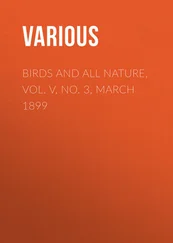
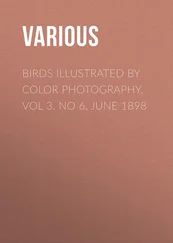
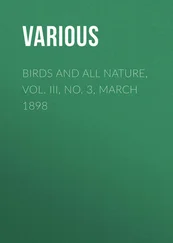
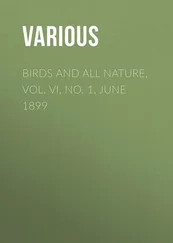
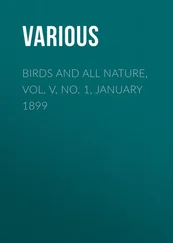

![Various - Birds Illustrated by Color Photography [January, 1898]](/books/746296/various-birds-illustrated-by-color-photography-ja-thumb.webp)

![Various - Birds Illustrated by Color Photography [February, 1898]](/books/746443/various-birds-illustrated-by-color-photography-fe-thumb.webp)